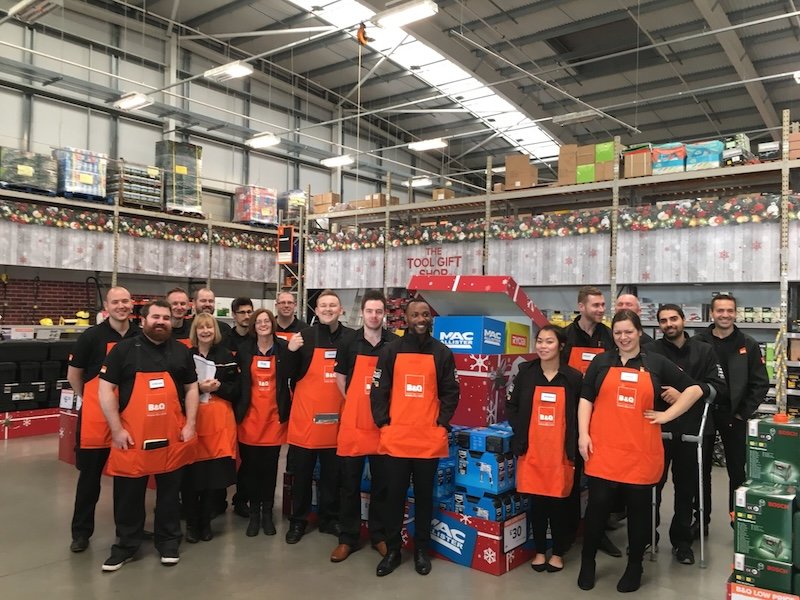Interview: Gregoire Mercusot, Materials Engineer, Decathlon
RTIH gets the low down on how Decathlon is using 3D printing and why it has launched an in-house 3D printing lab.
RTIH: Tell us about yourself
GM: My name is Gregoire Mercusot and I’m Materials Engineer for the ADDLAB by Decathlon, the retailer’s additive manufacturing prototype entity.
I’m in charge of sustainable development within the ADDLAB. This includes the implementation of material recycling and production of prototypes of our future products through additive manufacturing.
Materials are at the heart of all industrial activities and revolutions, from metallurgy to nanomaterials and nanotechnologies, including microelectronics, plastics, and composites.
The materials specialty trains engineers with knowledge of the major classes of materials, with skills geared towards the development of new materials, the characterisation, choice, and implementation of materials, as well as quality and environmental aspects.
Decathlon combines two activities: the creation of sports products and their distribution online and in stores. Based on an integrated model, it masters all the stages in the life of its products: from research and development to sales, including design, production, and logistics.
Present in France and internationally with more than 1,000 points of sale, the service, brand, and store teams have been working since 1976 with a constant ambition: to innovate in all areas to remain the main playing partner of all athletes.
RTIH: What was the thinking behind the launch of your in-house 3D printing lab?
GM: ADDLAB is an internal Decathlon service entirely dedicated to additive manufacturing. Born in May 2016, it was created by Julien Guillen, Romain Courtecuisse, and Eddy Chatelain. Initially, the idea was to bring new solutions to change how we prototype and design our sports products.
It started with a single 3D printer on the corner of a desk. Before the arrival of 3D printing, prototyping requests were all outsourced. It could take weeks, require a minimum quantity, or require the expensive creation of an industrial mold. Also, the intellectual property of our ideas could be greatly exposed.
RTIH: How is Decathlon using 3D printing?
GM: We now have more than seven laboratories (in France and worldwide including Taiwan), one in-store, and many technologies (more than 35 machines) to address as many needs as possible.
A major driving force within ADDLAB’s R&D engine is 3D Systems’ Figure 4 Modular system and its diverse and growing innovative materials portfolio. The addition of Figure 4 Modular has given ADDLAB (Decathlon) a major competitive edge in terms of speed, precision, and versatility.
ADDLAB’s and Decathlon's mission is to sustainably bring the power of sport to everyone, everywhere, by designing the best products at the best prices and innovating for quality and performance so everyone can play.
The addition of the Figure 4 Modular system and materials perfectly aligns with this mission and is helping ADDLAB and Decathlon deliver on it.
Since its creation, more than 200,000 prints have been produced by ADDLAB. This service is open to everyone at Decathlon (internal people only), product engineers or designers, retailers, or people in regional workshops.
The project interacts with all the various labs and various entities of the Tech'off (Decathlon technical office) so that the printed parts are validated as compliant for our users. This internal proximity to all these test centres and talents allows ADDLAB to produce quickly while paying close attention to all the standards in force.
RTIH: What benefits have you seen from it?
GM: Before using Figure 4 technology from 3D Systems, it took at least one to three days for most prototyping requests, depending on the technology and material chosen) to additively manufacture the parts.
Today, because of the print speed of the Figure 4 solution, we can obtain the same parts in less than a day, sometimes even allowing us to carry out several iterations with our designers in the same day.
Figure 4 has allowed us to fill a gap in our offer, which is the manufacture of very detailed parts with high-performance materials from a technical point of view. This has made our design cycles even more agile and faster.
We work on the entire value chain, from the embryo of the idea to the second life of our products with the after-sales service. If we take into account all technologies we’ve used to date, the ADDLAB project is 1,055 projects/prototypes per month.
We have also been able to save by repairing 263 products to date that were destined for disposal. Take a look at all those users who have been able to continue their sports practice thanks to additive manufacturing.
RTIH: What can we expect to see from ADDLAB in the next 12 months?
GM: One of our vision goals was to provide the solution directly in-store to best help our customers, and that's it. Since 12th September, we have opened a new corner closer to our users in a completely innovative store (DX project). We are constantly testing and always finding the best solutions for both internal and external requests.
We want to open new laboratories around the world and thus limit unnecessary transport of 3D printed parts. Each local need is different. We will make sure to produce more spare parts in 3D printing and thus save many products that were no longer repairable. We will make 3D printing a reflex to allow everyone to design faster and further at Decathlon.
We process hundreds of different orders every day. The demands are more and more daring and ambitious. We hope for the future to represent loud and clear all the technicality, power, and strength of additive manufacturing.










Continue reading…